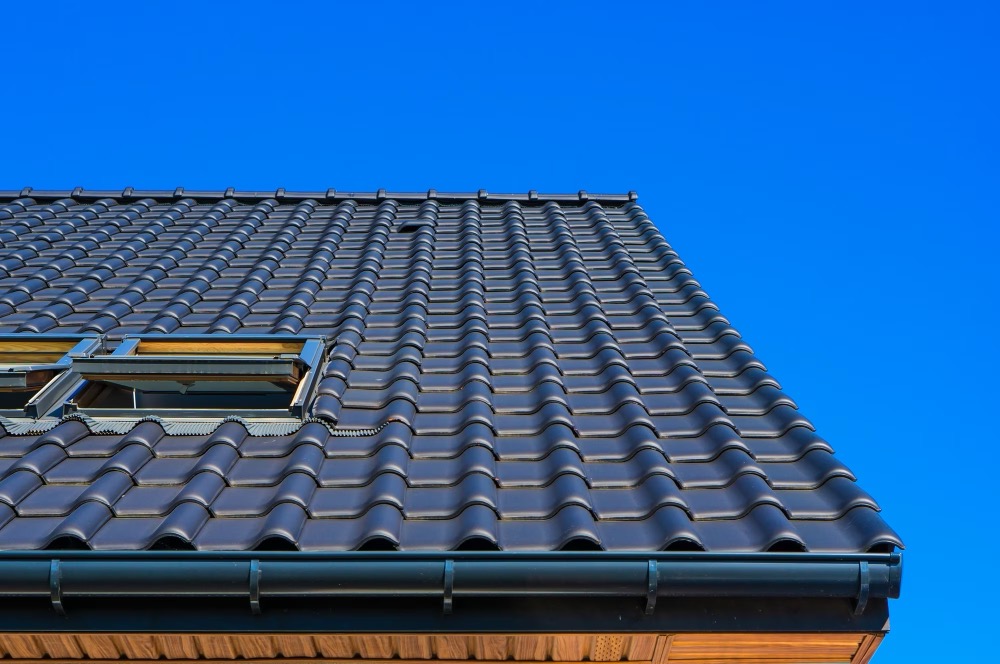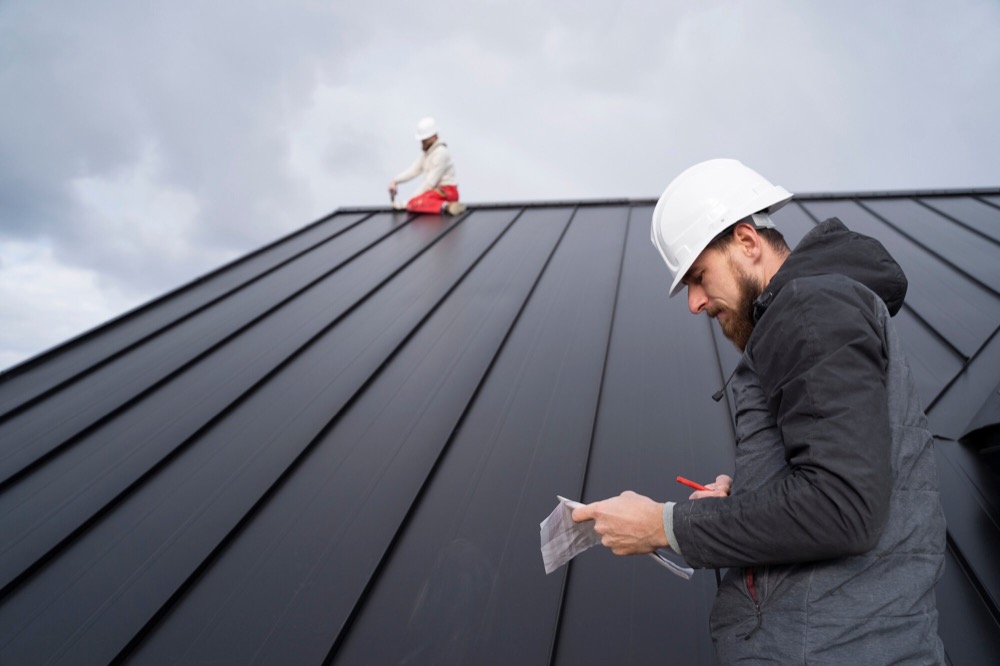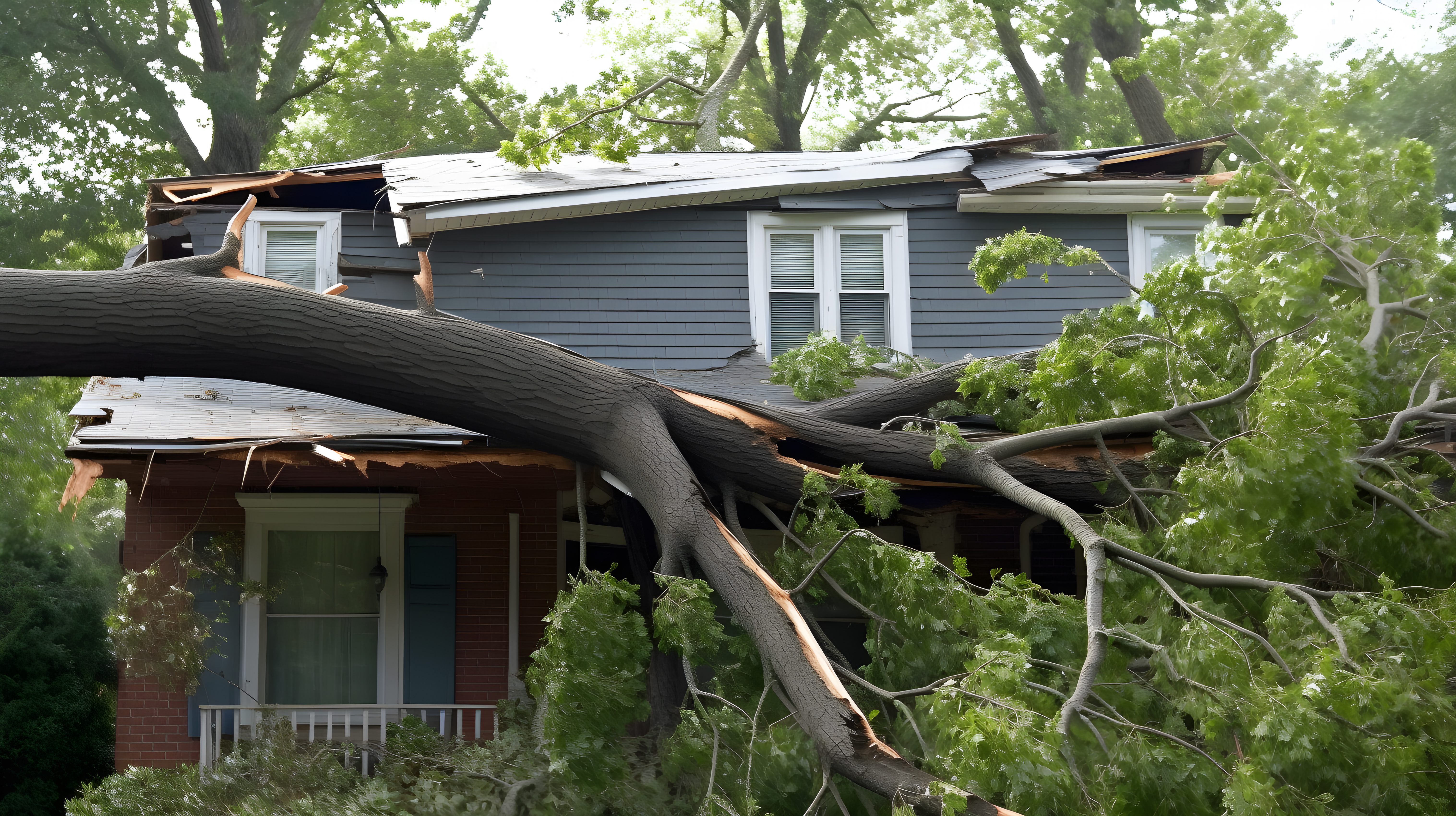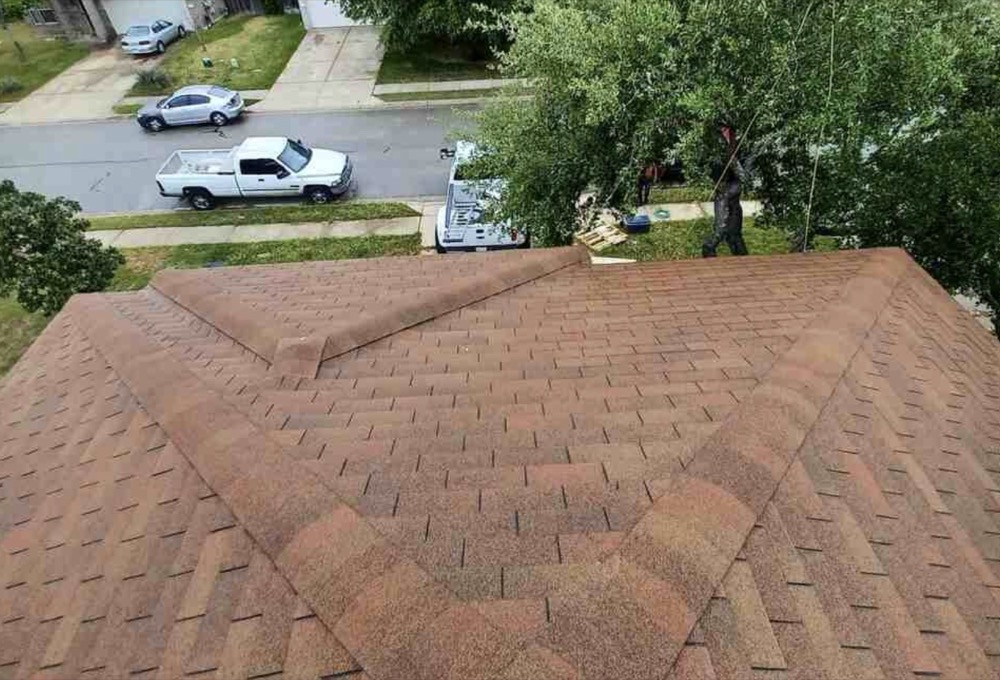The Impact of April Showers: Unmasking Roofing Leaks
Intro
Living in Austin, Texas, where April showers are not an uncommon occurrence, it's essential for homeowners to understand the impact that these spring rains can have on their roofs. Roofing leaks are a common issue that can arise during this time, causing damage to your home if left unchecked. In this blog post, we will explore the causes of roofing leaks, how to spot the signs early, the risks of ignoring a leak, DIY tips for managing minor leaks, finding the right roofing contractor in Austin, preparing your home for April showers, the impact of Austin's climate on roofing materials, insurance considerations, the cost of ignoring a leak, and frequently asked questions about roofing leaks.
Understanding the Cause of Roofing Leaks
Roofing leaks, a homeowner's nemesis, especially during the temperamental weather of April in Austin, Texas, can emerge from a myriad of sources. Among the most common culprits is the natural wear and tear roofs endure over time. Years of exposure to the elements gradually compromise roofing materials. Shingles may start to crack or become dislodged, flashing—the thin pieces of metal installed to prevent water from seeping into the structure—can corrode or become unsealed, and the waterproofing barriers can weaken, leaving your home vulnerable to water infiltration.
Another significant cause is improper roof installation. A roof that has not been installed correctly is prone to a host of problems, including leaks. Gaps in the roofing material, inadequate sealing around vents and chimneys, and improperly installed gutters and downspouts can all allow water to penetrate the protective barrier of your home, leading to potential damage.
Poor maintenance further exacerbates the risk of leaks. It's crucial to regularly inspect and maintain your roof to ensure minor issues do not escalate into serious problems. For instance, neglected gutters can lead to water build-up and damage to the roof's edge, while unaddressed minor damages like a few missing shingles can quickly become a pathway for water entry during a heavy downpour.
Severe weather conditions, particularly prevalent in Austin's climate, also play a significant role in causing roofing leaks. Hail can bruise or puncture roofing materials, strong winds can lift or remove shingles entirely, and heavy rains can exploit any weakness in the roof's armor. Each of these factors, alone or in combination, can compromise the integrity of a roof, making it essential for homeowners to be vigilant and proactive in the care and maintenance of their roofing systems to prevent leaks and protect their homes.
Spotting the Signs of a Leaking Roof Early
Identifying the early indicators of a leaking roof can spare homeowners from the stress and cost of extensive damages. Water stains that suddenly appear on your ceiling or walls often signify a breach in your roof's integrity. These stains might look like discolored patches or streaks and can grow or darken after rain. Additionally, if you notice that paint or wallpaper in your home begins to bubble or peel, it could be due to moisture infiltrating from a leak above.
Another tell-tale sign is the presence of mold or mildew, especially in areas that should typically be dry. A roof leak can create a damp environment in your attic or on your walls, fostering the growth of these unwelcome guests. Sometimes, mold isn't immediately visible, but a musty or moldy smell can indicate its presence. This odor is particularly noticeable in the attic, where air circulation might be limited, and moisture can accumulate from leaks.
Visible damage to the roof itself also indicates potential problems. Missing, damaged, or aged shingles are clear signs that your roof may be compromised. Similarly, if you observe any issues with the roof flashing—such as rusting or gaps—you should consider it a red flag. Flashing is critical for directing water away from the roof's vulnerable areas, and any damage can lead to leaks.
Lastly, during or after heavy rain, check for any signs of water intrusion in your attic or crawl spaces. Daylight visible through the roof, damp rafters, or insulation, and pooled water are all indicators that your roof might be leaking. Early detection of these signs and prompt action can prevent the minor issue of a leaky roof from escalating into a significant and costly problem.
The Risks of Ignoring a Roof Leak
The temptation to overlook a minor roof leak might seem reasonable at first, especially amidst the hustle of daily life. However, the decision to delay repairs can set a course for significant, more intricate problems that extend far beyond the roof itself. Moisture entering through even the smallest breaches can initiate the gradual deterioration of the structural integrity of your home. Wood framing can rot, insulation can become sodden and lose its effectiveness, and ceilings and walls can sustain serious damage, all of which compromise the safety and stability of the residence.
Apart from structural concerns, health risks escalate with unchecked leaks. Damp environments are ideal breeding grounds for mold and mildew, which can spread quickly throughout the home's interior. Exposure to mold poses health risks, particularly to those with respiratory issues, allergies, or compromised immune systems, making prompt attention to leaks not just a matter of property maintenance but of health care as well.
The financial ramifications of postponing roof leak repairs are equally daunting. Initial repair costs can skyrocket as damage becomes more extensive, requiring more materials, labor, and time to rectify. In addition, potential increases in utility bills from lost energy efficiency due to compromised insulation and the likelihood of facing higher insurance deductibles or reduced coverage eligibility due to neglect further exemplify the economic pitfalls of inaction.
In essence, the risks of ignoring a roof leak form a domino effect, where the consequences become progressively severe, affecting not just the roof but the entire ecosystem of the home. Addressing leaks promptly not only preserves the structural integrity and safety of your residence but also safeguards against unnecessary financial strain and health risks.
DIY Tips for Managing Minor Leaks
For homeowners who encounter a minor roof leak, taking immediate action can mitigate water damage until professional help is available. First and foremost, locate the source of the leak. This can often be done by checking the attic for water stains, mold, or damp insulation directly above the leak. Once identified, if the leak is small, you might temporarily patch it using roofing cement or sealant, which can be applied around the leaky area. Ensure you're using a product suitable for your roof type to avoid further damage.
If the leak is trickling through the ceiling, placing a bucket or container underneath to catch the dripping water can prevent damage to your floors and belongings. Covering the affected area with a waterproof tarp, securely fastened to prevent wind uplift, can provide temporary relief until repairs can be made. This is especially useful if the leak is extensive or if you're expecting more rain soon.
Clearing debris from gutters and downspouts is another crucial step; this can prevent water from backing up and exacerbating the leak. Even a small clog can cause water to pool and seep under the shingles, leading to leaks. Safe use of a ladder and adherence to safety protocols are paramount when performing this task.
Lastly, ventilating the attic space is vital. Proper airflow can help dry out the area affected by the leak and prevent the growth of mold and mildew. A simple, temporary measure includes placing a fan in the attic to circulate air, reducing moisture buildup.
These interim solutions can help manage minor leaks, but it's important to recognize they are not permanent fixes. Consulting with a professional roofing contractor for a thorough inspection and repair is essential to ensure the longevity and integrity of your roof.
Finding the Right Roofing Contractor in Austin
Navigating the search for a trustworthy roofing contractor in Austin demands careful consideration and due diligence. With the city's dynamic weather patterns, from intense heat to sudden April showers, selecting a contractor with local expertise and a robust track record is paramount. Begin your search by seeking recommendations from friends, family, or neighbors who have recently undergone roofing work. Their firsthand experiences can provide valuable insights into a contractor's reliability, communication, and quality of workmanship.
In today's digital age, online reviews and ratings on platforms like Yelp, Google, and the Better Business Bureau are indispensable resources. They offer a broader perspective on a contractor's reputation within the community. However, take the time to discern genuine reviews from those that may be misleading or biased.
Licensing and insurance are non-negotiable criteria in your selection process. Verify that any contractor under consideration is licensed to operate in Texas, ensuring they adhere to state standards and regulations. Insurance, both liability and workers' compensation, protects you as the homeowner in the event of accidents or damage during the project. Do not hesitate to ask for proof of insurance and check that it is up to date.
A detailed, written estimate is a critical component of your decision-making process. Reputable contractors will provide a comprehensive quote that outlines the scope of work, materials to be used, timelines, and the total cost. This transparency allows you to compare bids accurately and avoids unexpected expenses as the project progresses.
Lastly, a good contractor will offer warranties both on their craftsmanship and the materials used. This commitment signals confidence in their work and provides you with peace of mind.
Finding the right roofing contractor in Austin entails a blend of research, vetting, and intuition. Your efforts will lead to a partnership that not only addresses your immediate roofing needs but also contributes to the long-term protection and value of your home.
Preparing Your Home for April Showers
As the spring season approaches in Austin, it's crucial to proactively prepare your home to handle the April showers that are characteristic of the region. Effective preparation not only minimizes the risk of roofing leaks but also protects the overall integrity of your home. Start by ensuring your gutters and downspouts are thoroughly cleaned. Clogged gutters can cause water to overflow and accumulate around your home's foundation or beneath your shingles, leading to potential leaks and water damage.
Next, inspect your roof for any visible signs of wear or damage. Look for missing, cracked, or curled shingles that may allow water to penetrate the roof's defenses. It's also wise to examine the condition of the flashing around chimneys, vents, and skylights, as these areas are common sites for leaks. Any signs of damage should be addressed promptly to prevent water from infiltrating your home during heavy rains.
Trimming overhanging branches is another important step in preparing for April showers. Overhanging branches can scrape against roofing materials during windy conditions, causing damage over time. Additionally, fallen leaves and branches can accumulate on your roof or in your gutters, contributing to blockages and water accumulation.
Ensuring that your attic is properly ventilated and insulated is also vital. Proper ventilation helps to reduce the buildup of heat and moisture in your attic, which can weaken your roof over time and make it more susceptible to leaks. Adequate insulation, on the other hand, helps maintain consistent temperatures in your attic, preventing the formation of ice dams that can damage your roof during colder months.
By taking these preparatory steps, you can significantly reduce the likelihood of facing roofing leaks when the April showers arrive. Regular maintenance and vigilance are key to keeping your home dry and secure throughout the spring season and beyond.
The Impact of Austin's Climate on Roofing Materials
The unique climate of Austin, characterized by its intense heat, sudden downpours, and at times severe weather events, necessitates careful consideration when selecting roofing materials. The relentless sun and high temperatures common in the area can significantly shorten the lifespan of many roofing materials by causing them to degrade, fade, or crack more quickly than they would in milder climates. This degradation not only affects the aesthetic appeal of a roof but can also lead to a loss of structural integrity and increased susceptibility to leaks.
Furthermore, Austin's propensity for sudden and heavy rainfall can test the resilience of roofing systems. Materials that are not suited to rapidly shedding water or that are prone to absorbing moisture can quickly become problematic, leading to leaks, mold growth, and even structural damage over time. The occasional hail and strong winds that accompany storms in this region can also inflict direct physical damage on roofing materials, necessitating repairs or full replacements sooner than anticipated.
Selecting materials specifically designed to withstand these conditions is critical for Austin homeowners. Options such as metal roofing, which reflects solar radiation, or impact-resistant shingles, which can better survive hail and wind, are becoming increasingly popular choices. These materials offer the dual benefits of durability against the elements and potential energy savings by keeping homes cooler during the hot summer months.
Insurance and Roofing Leaks: What You Need to Know
Navigating the complexities of homeowners' insurance in relation to roofing leaks is crucial for Austin residents. A common misconception is that all roofing repairs or damage due to leaks will be covered under a standard insurance policy. However, the reality is that coverage often depends on the source of the leak and the circumstances leading up to it. Generally, insurance policies are more likely to cover the damage if the leak is the result of a sudden, unforeseen event, such as damage from a storm. On the other hand, leaks resulting from neglect, lack of maintenance, or normal wear and tear might not be covered.
Understanding the specifics of your policy is essential. Some insurers may offer coverage for roof repairs or replacement if the damage is caused by a covered peril, such as fire, hail, or wind. Yet, it is important to note that any claim made may be subject to a deductible, which is the out-of-pocket cost you are responsible for before your insurance coverage kicks in.
Proactively engaging with your insurance provider is advisable. Documenting the state of your roof before any damage occurs can provide valuable evidence in the event of a claim. This includes keeping a record of regular maintenance, inspections, and any repairs done over the years. In the case of a leak, documenting the damage with photos or videos and contacting your insurer promptly can streamline the claims process.
Moreover, it's beneficial to review and possibly update your insurance policy regularly. As your roof ages or if you make significant repairs or replacements, adjusting your coverage to reflect these changes can ensure you remain adequately protected. Some homeowners might also consider additional coverage options, such as specific endorsements for roof damage, to enhance their protection against potential leaks and associated damages.
In summary, while insurance can provide a safety net for homeowners facing roofing leaks, understanding the limitations and responsibilities within your policy is key to effectively navigating a claim.
The Cost of Ignoring a Roofing Leak
Neglecting a roofing leak, while seemingly minor at first, can spiral into a myriad of costly and complex issues over time. The initial damage, though perhaps limited to a small area, acts as an open door to further complications. Water ingress can swiftly progress from a simple drip to widespread moisture damage within your home’s structure. This moisture fosters an environment ripe for mold and mildew growth, not only compounding repair costs but also posing serious health risks to inhabitants.
The ramifications extend beyond just the physical repair of the leak itself. Saturated insulation becomes less effective, leading to increased energy costs as your heating and cooling systems work harder to maintain comfortable temperatures. Structural elements, once exposed to ongoing moisture, may begin to rot, compromising the integrity of your home and necessitating significant structural repairs.
Moreover, the aesthetic damage to interior finishes can be extensive. Plaster and drywall absorb moisture readily, leading to bulging, cracking, and eventual collapse. Flooring, too, can warp and buckle under the presence of excess water, requiring replacement. Each of these consequences carries its own financial burden, often far exceeding the cost of addressing the leak promptly.
In addition, the cumulative effect of these issues can substantially decrease your home’s value. Should you decide to sell, prospective buyers are likely to be deterred by signs of water damage and the potential for hidden mold or structural issues. This can lead to offers significantly below market value, if any are made at all.
Ignoring a roofing leak, therefore, is a gamble with steep odds. The costs, both immediate and long-term, far outweigh the expense and effort of early intervention. Addressing leaks promptly not only saves money but also preserves the health, safety, and value of your home.
Frequently Asked Questions About Roofing Leaks
Frequently asked questions surrounding roofing leaks are critical for homeowners to navigate preventive measures and address existing concerns efficiently. One common query is the recommended frequency for roof inspections. Industry standards suggest an annual inspection is prudent, coupled with additional checks following any significant weather events to catch and mitigate potential damage early. When it comes to tackling leak repairs, homeowners might wonder about the feasibility of DIY solutions. While temporary fixes can be applied by the homeowner for very minor issues, professional expertise is advisable for comprehensive assessment and repair to ensure the problem is fully resolved and doesn't lead to more extensive damage. The duration of roof repair or replacement projects often varies, based on the scope of work and materials involved. Most repairs are achievable within a few days, although complete roof replacements may extend up to a week or slightly longer, depending on the complexity and size of the roof. Ensuring that your roof remains in optimal condition requires understanding these key aspects, thereby preventing minor leaks from escalating into more significant, costly problems.
‹ Back









